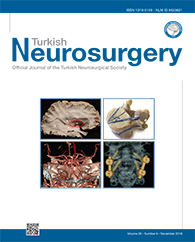MATERIAL and METHODS: A retrospective study was performed between May 2012 and September 2014, which included 23 adolescent patients who underwent PEID for L5/S1 lumbar disc herniation. Ten females and 13 males were included, with a mean age of 15.4 years and a mean BMI of 25.1 kg/m2. The pre- and postoperative visual analogue scale (VAS), Japanese Orthopaedic Association (JOA), and modified MacNab scores, as well as perioperative data, were collected.
RESULTS: The mean follow-up period was 19.7 months. The average operation time and hospital stay were 80.9 ± 7.3 minutes and 5.8 ± 1.2 days, respectively. During the follow-up period, the VAS for back and leg pain decreased significantly, and JOA scores greatly increased (p<0.05). In terms of modified MacNab criteria, 86.9% of patients showed excellent or good results. After surgery, two patients complained of leg numbness, and another patient underwent a subsequent open discectomy due to recurrent disc herniation.
CONCLUSION: Considering specific anatomical peculiarities and expectation for rapid recovery, PEID is a safe and effective minimally invasive technique for ALDH at the L5-S1 level.
Keywords : Adolescent, L5-S1 level, Lumbar disc herniation, Percutaneous endoscopic interlaminar discectomy




